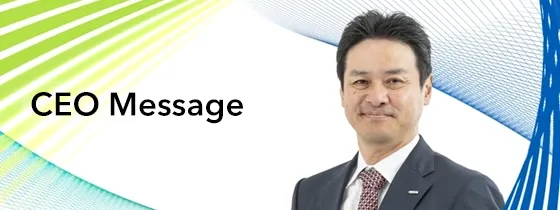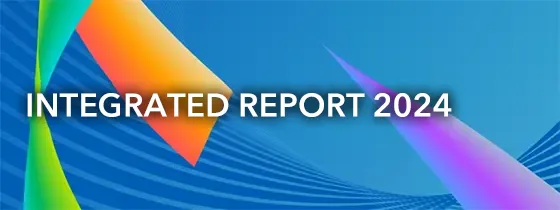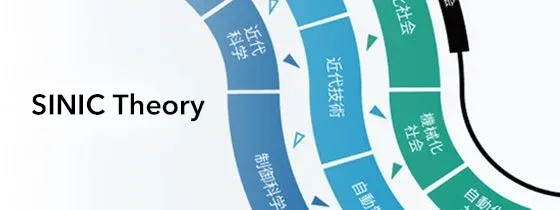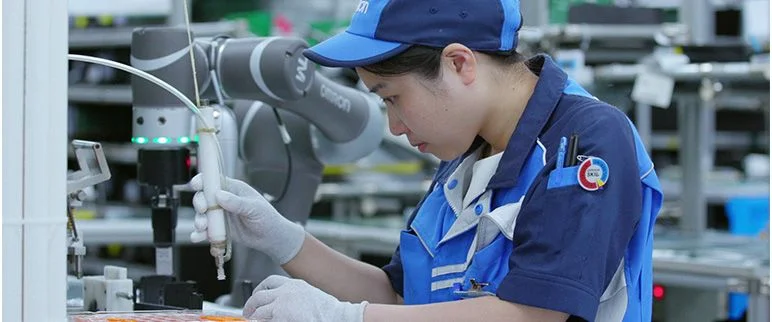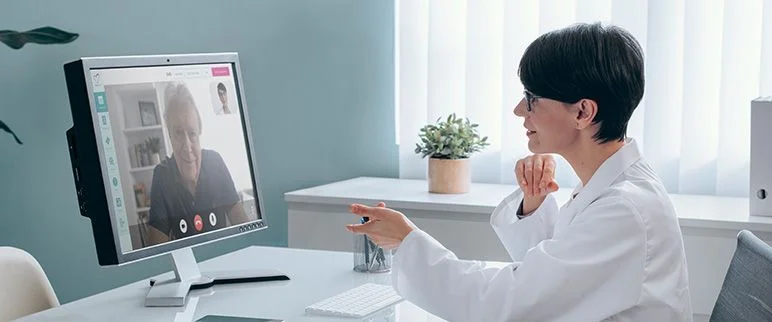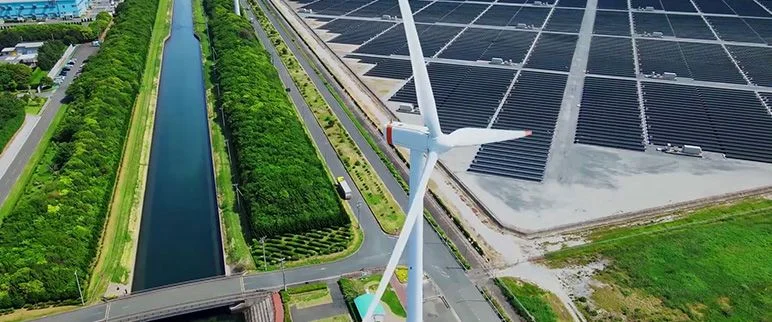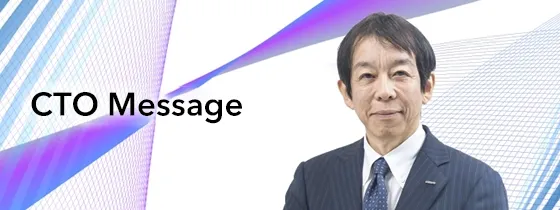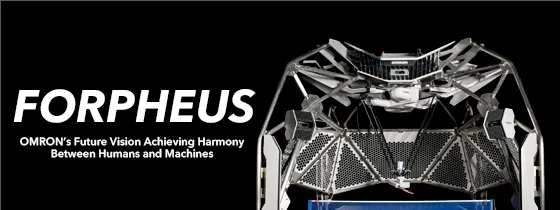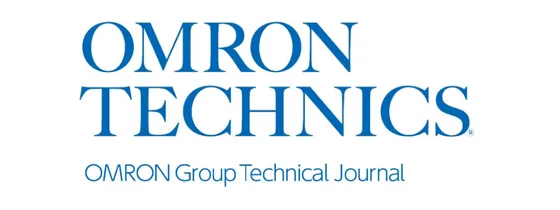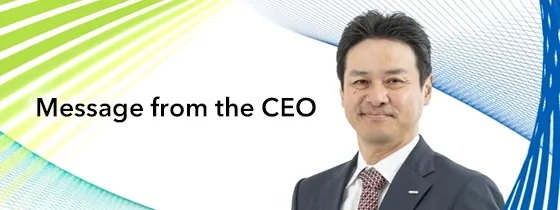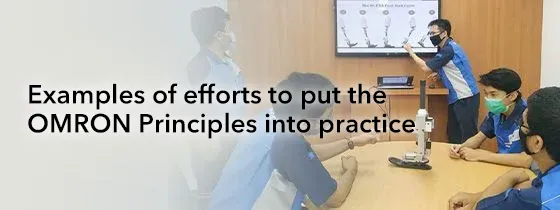CFO Interview

‚ÄúThe OMRON mission is to improve lives and contribute to a better society by implementing the OMRON Principles. So says CFO Koji Nitto, who is responsible for ‚ÄúROIC management,‚ÄĚ the company‚Äôs system for accelerating management of the OMRON Principles. Building a ‚Äúself-driven growth structure‚ÄĚ is essential to solving social issues. Through ROIC management, we are implementing self-driven growth and incorporating the creation of innovation into management mechanisms. We spoke with CFO Nitto about building systems to increase earning ability and powering the growth cycle with a combination of discipline and boldness. (Interviewer: Editorial Department)
The Role of the CFO Management based on the OMRON Principlest and Self-Driven Growth
‚ÄĒEditorial Department (in bold below): Could you talk about management based on the principles that OMRON is striving for and about your role as CFO in putting these principles into practice?
Nitto (omitted below): What are OMRON’s goals and what is the purpose of its existence? We are always asking ourselves about the true meaning of the corporate motto given to us by our founder Kazuma Tateishi and of the OMRON Principles which have inherited the spirit behind that motto. The answer is that it is the duty of all the people working at OMRON to practice the OMRON Principles and to improve lives and contribute to a better society through our business.
My role as CFO is evaluate investments and to redistribute resources with a sense of discipline.
‚ÄĒWhat are the essential elements needed to solve social issues as called for under the OMRON Principles?
It is essential for OMRON to establish a self-driven growth structure to solve social issues and achieve continuous growth. How can we build that structure?
First, we must continue to create businesses that contribute to the betterment of society. Although we are currently buffeted by headwinds in the current business climate, it‚Äôs not stopping all economic activity or social initiatives. Medium- and long-term social issues that we can solve through our businesses are increasingly apparent. These issues include labor shortages due to low birth rates and aging demographics. If we can keep our focus on these trends and invest in businesses where there are barriers that our competitors cannot imitate or where there we have latent competitiveness, we will create value in spite of challenges, a veritable ‚Äúgrowth engine‚ÄĚ that can make meaningful contributions to society.
To create this new growth engine, OMRON is increasing its spending on development and has set up new organizations like the Innovation Exploring Initiative HQ and OMRON SINIC X to serve as platforms for innovation. Through OMRON VENTURES CO., LTD., we are actively investing with venture firms around the world to stimulate open innovation.
Another element essential for self-driven growth is to continue to grow our businesses and improve profitability. We will not be able to achieve self-driven growth only by creating new businesses. Although we certainly need new businesses, it is just as important to increase the profitability of and grow all of OMRON’s businesses through ceaseless structural reform.
We will achieve self-driven growth by accelerating these two elements. We can engage boldly with social issues and continue OMRON’s own unique cycle of growth.
Increase Gross Profit Margin to Refine Earning Capacity and Make Necessary Investments
‚ÄĒIn the first half of VG2.0, the company continued its focus on investment for growth and the gross profit margin. Could you explain the reasons for that?
The first 2 years of VG2.0 we have aggressively made the necessary investments toward achieving self-driven growth. We focused on the growth engines of our industrial automation and healthcare businesses, extending the range of solutions to make up for where we were short by expanding technologies and products.
What we are continuing to focus on toward the achievement of self-driven growth is our gross profit (GP) margin. That’s because the gross profit margin represents pure profit attributable to the production of physical goods by subtracting from sales the cost of sales. Since the gross profit margin is the source of our investment resources, we will increase our ability to invest to the extent that the gross profit margin increases. In this way, we will set the growth cycle in motion by increasing our competitiveness through investing. It is vital that we continue to invest for growth, even in the midst of a tough business climate. That is why the gross profit margin is so important: it is the source of those resources.
It takes more than production to increase the gross profit margin: every division of the company, from sales and development, to headquarters, must act in a coordinated way to increase the gross profit margin. For example, it’s exceedingly hard to achieve a 3% cost reduction with production, but if the gross profit margin is 50% and sales gives a 1.5% discount, the entire 3% cost reduction that production had sweated blood to get to will be wiped out. Since gross profit margin is variable, we make sure everyone in the company understands the importance. As a result, the 36.8% gross profit margin in fiscal 2011 at the start of VG2020 increased to 41.2% by fiscal 2018.
If this 4.4 points increase is calculated backwards from net sales of ¥859.5 billion in fiscal 2018, it is apparent that we’ve picked up ¥37.8 billion in investment resources. We have significantly increased spending on development and SG&A expenses using the resources generated by this increase in the gross profit margin, but we have been able to increase the operating profit margin by 2.4 points.
In the second half of fiscal 2019, we will evaluate the assets acquired as a result of investment for growth to improve profitability and restructure to build a more muscular OMRON.

ROIC management requires management discipline
‚ÄĒIn addition to raising the GP margin, what other unique measures is OMRON taking to contribute to sustainable corporate value growth?
It takes monitoring of return on investment, evaluation, and maximization to make effective use of limited resources and to achieve self-driven growth. Businesses must have earnings capacity in addition to growth power. It is the combination of both of these factors that underlies ROIC management. ROIC is a crucial management indicator because it measures the return on invested capital and can be used to assess performance according to the type of business.
However, approached as a management indicator, employees on the front line may not see the connection to their own work. That is why we have introduced the Down-Top ROIC Tree. The Down-Top ROIC Tree breaks down ROIC into the key performance indicators (KPIs) of the automation rate, the failure cost ratio, and the facilities turnover rate to find out which improvements would lead to greater efficiency in business processes and how these efficiencies would in turn lead to improved results. The Down-Top ROIC Tree is way to visualize this analysis. Each and every employee must take responsibility for boosting profits and sustaining growth because if our activities are not consistent with one another, we will not move in the same direction toward the creation of value. Therefore, our aim is to connect actions through all levels of our organization, linking policies set by management to improvement actions performed by employees.
Also, to ensure that ROIC management is more deeply understood, we have introduced an interpreted formula called ROIC Management 2.0. By deploying ambassadors in each division, we are sharing advanced case studies throughout the company.
‚ÄĒOMRON also considers portfolio management to be important.
While the business environment is keep changing, not all businesses grow as planned. Disciplined management will be essential for OMRON to achieve self-driven growth. With that in mind, we must always look at the makeup of our business and rebuild our portfolio to focus our efforts on business that have significant profitability and growth potential. There are nearly 90 business units in OMRON. We are constantly assessing the economic value and market competitiveness of each of our businesses to make critical management judgments about whether to continue a business or to divest ourselves of it and whether to shift resources to new growth businesses. This kind of business assessment using portfolio management is essential for sustainable business management. Moreover, disciplined management is necessary in the pursuit of the OMRON Principles.
As public institutions that should create value, companies are made up of a wide range of stakeholders. In the case of institutional investors, there are many people who depend for their livelihood on pensions. Profits must be duly returned to these indirect stakeholders. In other words, businesses that cannot generate a minimum level of earnings do not make an adequate contribution to the betterment of society. To the extent that earnings are a measure of the value a company provides to the world, I believe companies must exercise highly disciplined investment management through clear rules defining individual activities in a given business field and how much income growth is generated.
OMRON has established ROIC of 10% as the bar that each of our businesses must clear. When a business’s ROIC falls below 6%, we start considering divestiture. Our expected cost of capital is around 6%. If we carry businesses that do not produce ROIC of at least 6%, we will not generate the capital we need for future growth. That would contradict the OMRON Principles of contributing to a better society.
As a result of various strategies, including Down-Top ROIC Tree and Portfolio Management, OMRON achieved fiscal2018 ROIC of 10.6%, even while we increased R&D expenses as well as SG&A expenditures in expectation of growth. This level of ROIC is significantly higher than the average 6.75% for all publicly-traded companies in Japan.
OMRON has established a unique growth cycle to enhance corporate value by solving social issues
‚ÄĒTell us about policies and strategies for the improvement of shareholder value.
Going forward, we will continue to accelerate our growth cycle by steadily implementing a growth strategy based on ROIC, and we will achieve further growth by allocating profits generated by high GP rates to growth investments. Our plans call for investing the profits generated by this growth cycle in accordance with appropriate cash management and profit distribution policies. In improving shareholder value, we will implement investment for growth, stable dividends, and opportunistic stock buybacks, in that order. The annual dividend for fiscal 2019 is calculated by applying the dividend on equity ratio (DOE) standard due to uncertainty about the business climate.
There has been a growing demand in recent years for companies to demonstrate sustainability in terms of ESG and SDGs. This means that these days, shareholders will select companies that use the assets entrusted to them by shareholders to build a better society while being able to provide solid returns. To respond to their expectations, OMRON will achieve business growth by accelerating ROIC management while solving social issues with OMRON’s unique technology and services as contribute to building a better world. We will achieve both of these goals.
Finally, could you talk about sustainable improvements in corporate value with a view to post Value Generation (VG)?
This year, due to uncertain economic situation we expect the factory automation and other industries will suffer significant impact. We see these challenging conditions as an excellent opportunity for corporate reform. Accordingly, we intend to strengthen our corporate infrastructure through more consistent implementation of ROIC management.
We also believe that the key to sustainable improvement in corporate value lies in our ability to innovate. What this means is that during the last two years of VG 2.0 and beyond, we will forge ahead steadily with discipline and boldness to drive the innovation creation cycle, and we will make sure that this system is firmly built into the company‚Äôs management mechanism. We will set up a self-driven growth cycle that is unique to OMRON to enhance corporate value by solving social issues ‚Äď . My mission as CFO is to continue this work.

